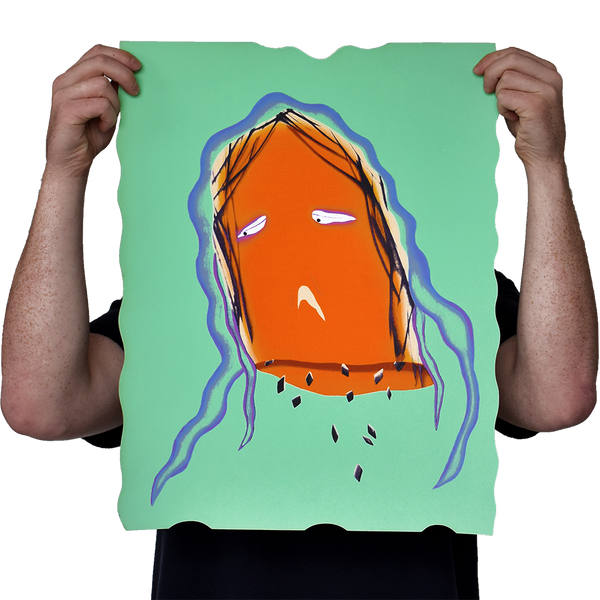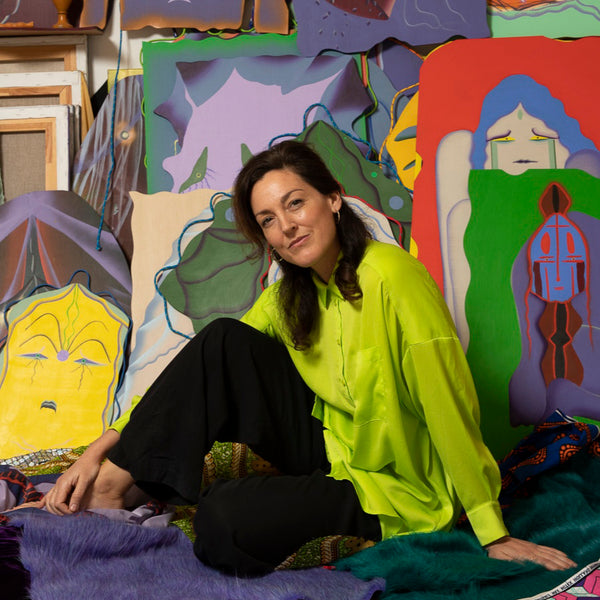After her studies psychology, sculpture and mixed media, Lysandre Begijn took up painting. Her work, which bears an affinity with installation art, embodies a strong connection between the psyche and art. While much of Lysandre Begijn’s painterly work can be defined as abstract, this recent body of work strongly tends toward the figurative. Faces - or masks - is what instantly comes to mind. At the basis of these colourful ‘faces’ is an assemblage of abstract, flat painted forms and scraps of textile material. Some compositions have been entirely built up out of textiles. Between the draperies a play of veiling and unveiling unfolds, thus suggesting a continuous movement. Painted shapes and the use of textile, endows the work with a direct and powerful physical presence. In this physicality the sculptor can be recognised. Using textiles undoubtedly accords a tactile quality to the work in which the classical format of the painting becomes a layered installation. In the rawness of the works, using odd materials, and in the negation of conventional rules of well-defined art disciplines, these works find resonance with the masks made by Dadaist Marcel Janco. Janco made masks representing distorted, bizarre faces that found inspiration in the sculpted wooden masks of the Lötschental in the Swiss Alps and that were used during Dada gatherings.


